(QBDB) - Since ancient times, people in Phong Hoa commune (Tuyen Hoa) have known about a special stream containing rare naturally grown vegetables, providing clean food for people in the area. In recent years, some households have expanded the area of growing this vegetable, bringing in a significant source of income.
Watercress Stream
Watercress (also known as watercress) is currently cultivated by people in many localities and supplied to the market as food. However, the natural, fragrant, crunchy watercress characteristic of Phong Hoa commune is not available everywhere.
Following the cadres of the Farmers' Association of Phong Hoa commune, we went to Sao Phong village, which is known to have the only source of watercress in Tuyen Hoa district. Sao Phong village is located on the southern bank of Gianh river, the section where the North-South railway connects to Minh Cam cave, near Lac Son station (in Chau Hoa commune). Led by some locals, we went up the mountainside about 200m and came across a small stream with cool, babbling water. The locals said this was the watercress stream, the village's source of clean food.
 |
We continued towards the source of the stream, through the rough stone steps to a relatively flat section of the stream, green cress patches between large and small rocks began to appear. Along the stream for a few hundred meters, people used soil and rocks to block off many fields of different shapes. There, cress plants grew in green, luxuriant clumps, clear, cool water gushed from the crevices of the rocks.
According to the locals, it is almost the end of the season and the vegetable fields outside the village have become old and are about to die. However, at the head of this stream, due to the water source and cool climate, the watercress plants are still growing well. This is also the place where this precious vegetable variety will be preserved for the following seasons.
The stream containing natural watercress in Sao Phong village is called Dong Len stream. This place has a source of cool water flowing all year round, the stream bed has sandy mud mixed with rocks, an ideal environment for this aquatic vegetable to grow.
According to local people, watercress in Phong Hoa has a long history. In the past, the French brought it to grow in Rau stream, near Minh Cam railway tunnel for food (the French colonialists previously built a military base in Minh Cam Noi village, Phong Hoa commune). Later, people brought the variety to Dong Len stream to grow and it has survived to this day. The strange thing is that in addition to Rau stream, Dong Len stream and another location in Sao Phong village, people also brought watercress to grow in many places but it did not grow anywhere.
 |
“The deciding factor here is the water source, only the water source here is suitable for watercress,” affirmed Mr. Nguyen Ngoc Thuong, Sao Phong village, Phong Hoa commune.
Mr. Thuong added: Watercress has been present in Dong Len stream for a long time. In the past, when the season came, people would divide each section of the stream bed, surround the banks, make the soil soft, then pick the remaining vegetables on the banks of the stream and gradually spread them out to create a clean food source for their families. Currently, some households with rice fields near Dong Len stream have brought water to dig ponds to raise fish and expand the area of watercress for sale on the market.
Millions of dollars in income from watercress
Following the stream to return, we happened to meet Ms. Ho Thi Ly picking watercress at the village entrance. Also here, the Dong Len stream water source was blocked by the locals and then a canal was built to lead it to another direction to serve livestock and farming. Ms. Ho Thi Ly's family is one of the households with the largest watercress growing area in the area with more than 500m2. Because the water source is not large, Ms. Ly and other households only choose small fields along the irrigation canal to grow vegetables.
 |
Ms. Ho Thi Ly said: Watercress is very picky about water, the water source must be clean, cool in the summer and warm in the winter, and not contaminated for the vegetable to grow. The time to plant watercress starts from around September to March of the following year. The colder and rainier the weather, the more watercress grows.
Ms. Ly also said that to grow watercress, first of all, you have to choose suitable land with high humidity and water from the stream. Then, make the soil soft and spread the seedlings (watercress is propagated by stems and branches taken from Dong Len stream) on the field, then add water so that the plants can take root and grow. At the beginning of the season, each household only plants a small area and then gradually increases it depending on the needs and area of each family.
Ms. Ly's family has grown watercress for more than 10 years, each crop brings in tens of millions of VND. Every week, Ms. Ly cuts and sells about 70-100 bunches of vegetables, each bunch sells for 10-15,000 VND, which means she earns 3-5 million VND per month. Ms. Ly said that in the past, she only grew vegetables for her family, but now the market demand is there, many people know about the source of clean vegetables in Phong Hoa and place orders, so her family has expanded the area. Currently, her family mainly sends vegetables to sell to customers and acquaintances in Dong Hoi City.
According to Oriental medicine, watercress has a bitter taste, aromatic smell, cool properties, has the effect of clearing blood, cooling, reducing pain in the bronchi. Watercress is not only used as food but also used as medicine to treat cough, bronchitis, has the effect of cooling the lungs and stomach, good for people with diabetes and some skin diseases. Therefore, adding watercress to the daily menu is the choice of many housewives. However, watercress of natural origin like in Sao Phong village, Phong Hoa commune is very rare, so not everyone, at any time can buy it. |
About 200m from Ms. Ho Thi Ly's house, Mr. Nguyen Anh Dung's family also regularly grows watercress for sale. Currently, his family grows about 200m2, each crop of watercress brings in an income of 10-15 million VND.
Mr. Dung confided: “Growing watercress does not require much care. All you have to do is prepare the soil first, then plant the seeds and create a regular water source for the vegetable to grow. “We do not fertilize the vegetables with any fertilizer, because fertilizer will spoil the vegetables. They only live on plankton and nutrients naturally found in the water source,” Mr. Dung added.
Chairman of the Farmers' Association of Phong Hoa Commune Pham Thanh Hoan shared: “Watercress is a very picky vegetable, in Phong Hoa Commune only Sao Phong village can grow it. Here, we inherit the source of cool natural spring water and spring water, the land for growing watercress is muddy but not contaminated with alum. The vegetable is suitable for clean water, but the water source must flow regularly, not stagnant to grow. Watercress in Sao Phong is light green, more fragrant and crunchy than in other places. Currently, the whole Sao Phong village has about 15 households growing watercress for use and sale to the market, income has increased significantly. However, the area for growing watercress in the whole village is only over 3,000m2, so the amount of vegetables supplied to the market is insignificant. The Farmers' Association encourages households with suitable land to continue expanding the area, maintaining and developing this valuable vegetable”.
Van Tran
Source


![[Photo] President Luong Cuong receives Lao Vice President Pany Yathotou](https://vphoto.vietnam.vn/thumb/1200x675/vietnam/resource/IMAGE/2025/5/25/958c0c66375f48269e277c8e1e7f1545)
![[Photo] Festival of accompanying young workers in 2025](https://vphoto.vietnam.vn/thumb/1200x675/vietnam/resource/IMAGE/2025/5/25/7bae0f5204ca48ae833ab14d7290dbc3)


![[Photo] Memorial service for former President Tran Duc Luong in Ho Chi Minh City](https://vphoto.vietnam.vn/thumb/1200x675/vietnam/resource/IMAGE/2025/5/25/c3eb4210a5f24b6493780548c00e59a1)
![[Photo] President Luong Cuong receives Vice President of the Cambodian People's Party Men Sam An](https://vphoto.vietnam.vn/thumb/1200x675/vietnam/resource/IMAGE/2025/5/25/6f327406164b403a8e36e8ce9d3b2ad2)






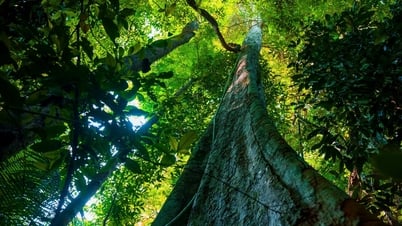
















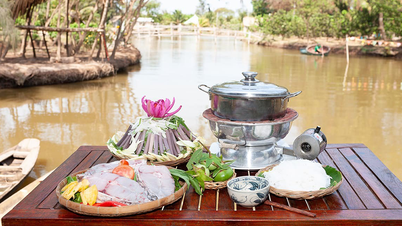


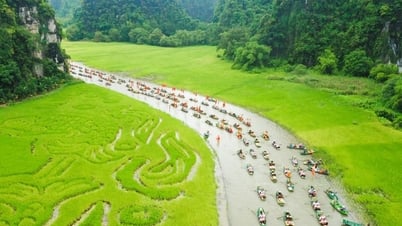




































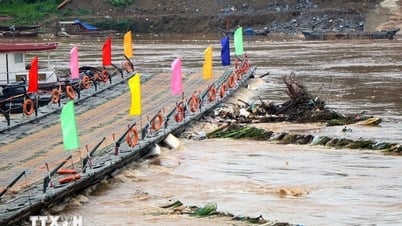














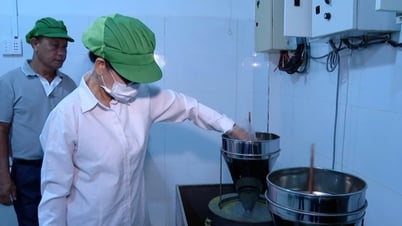






Comment (0)